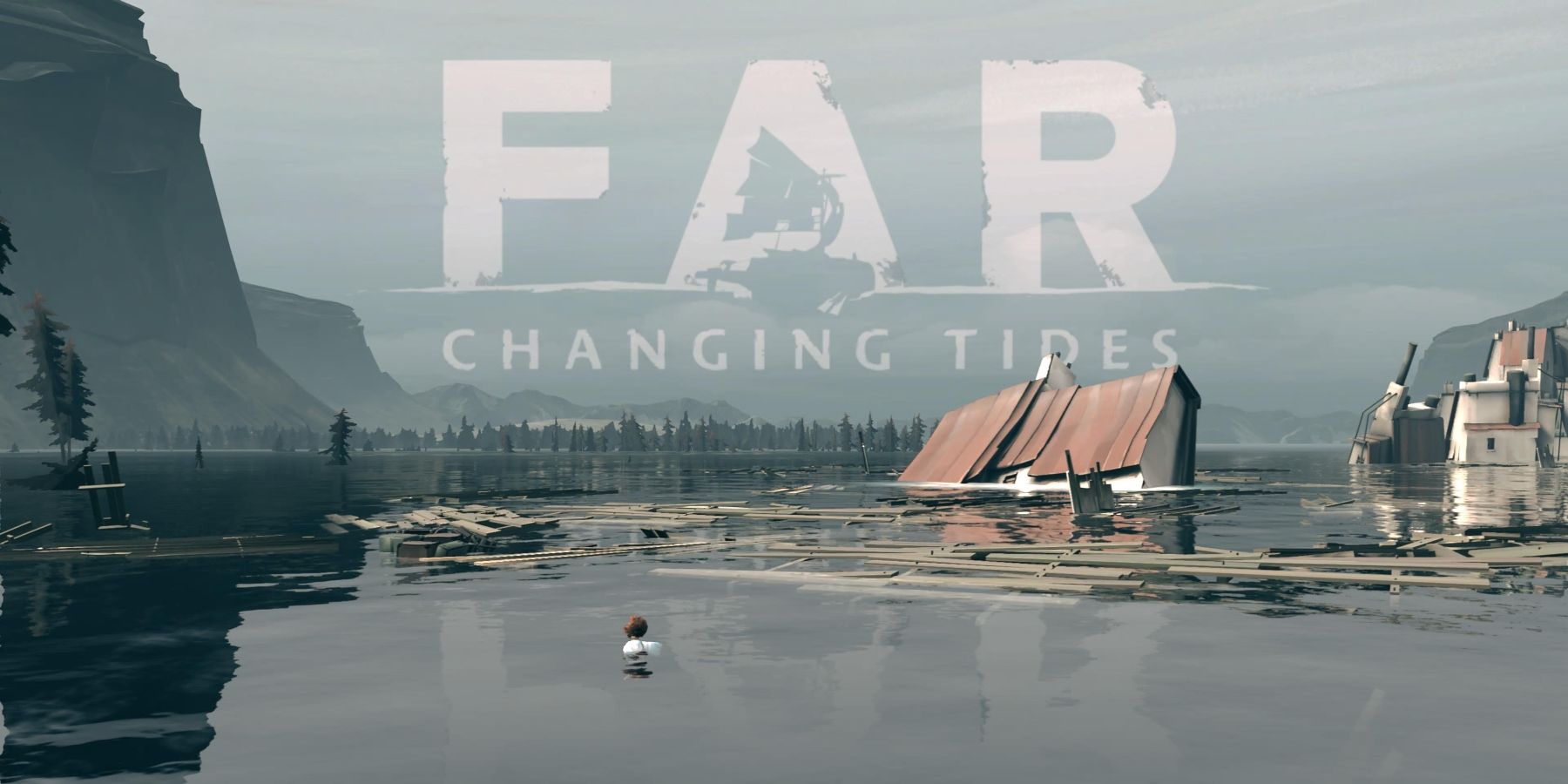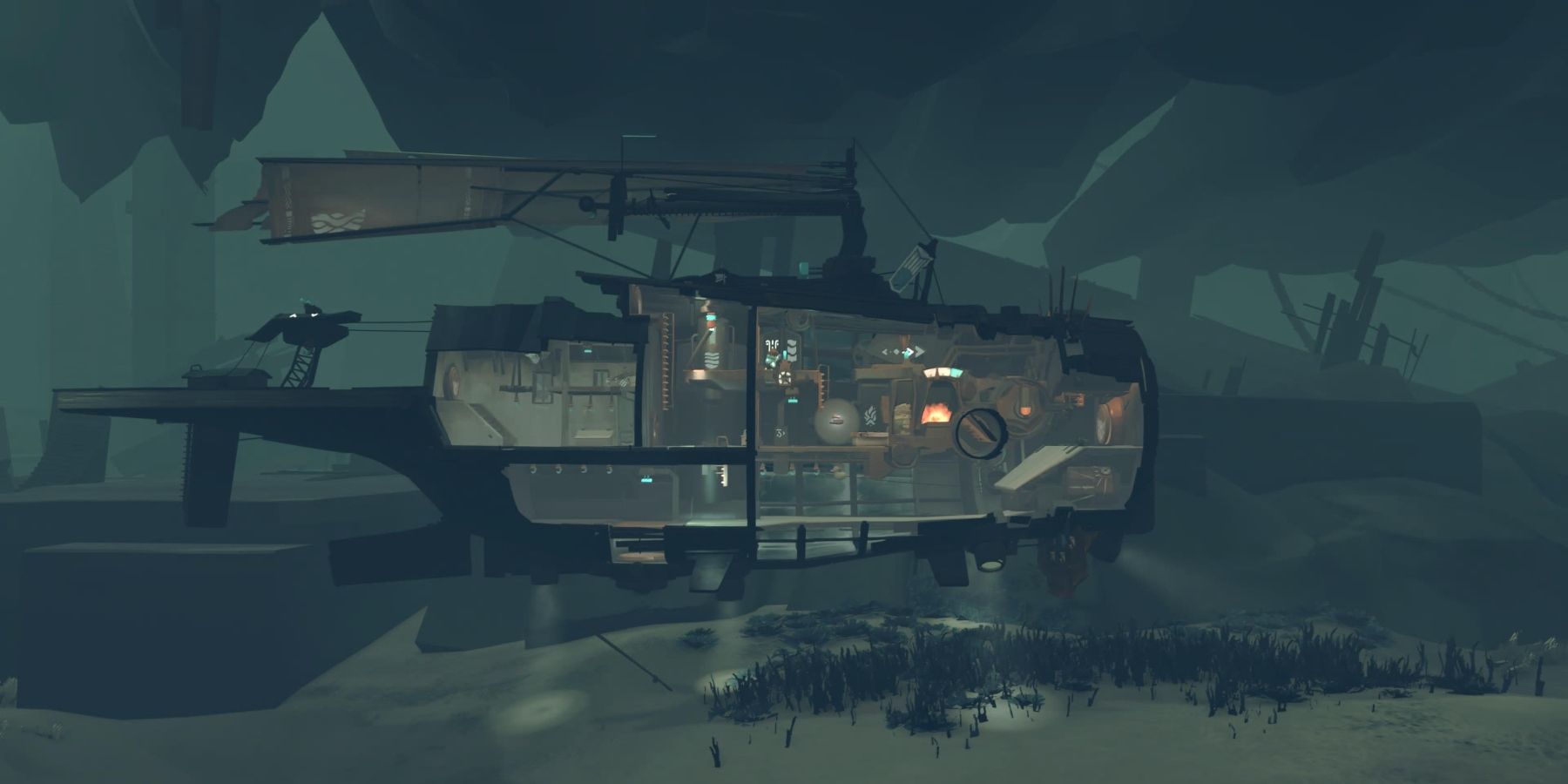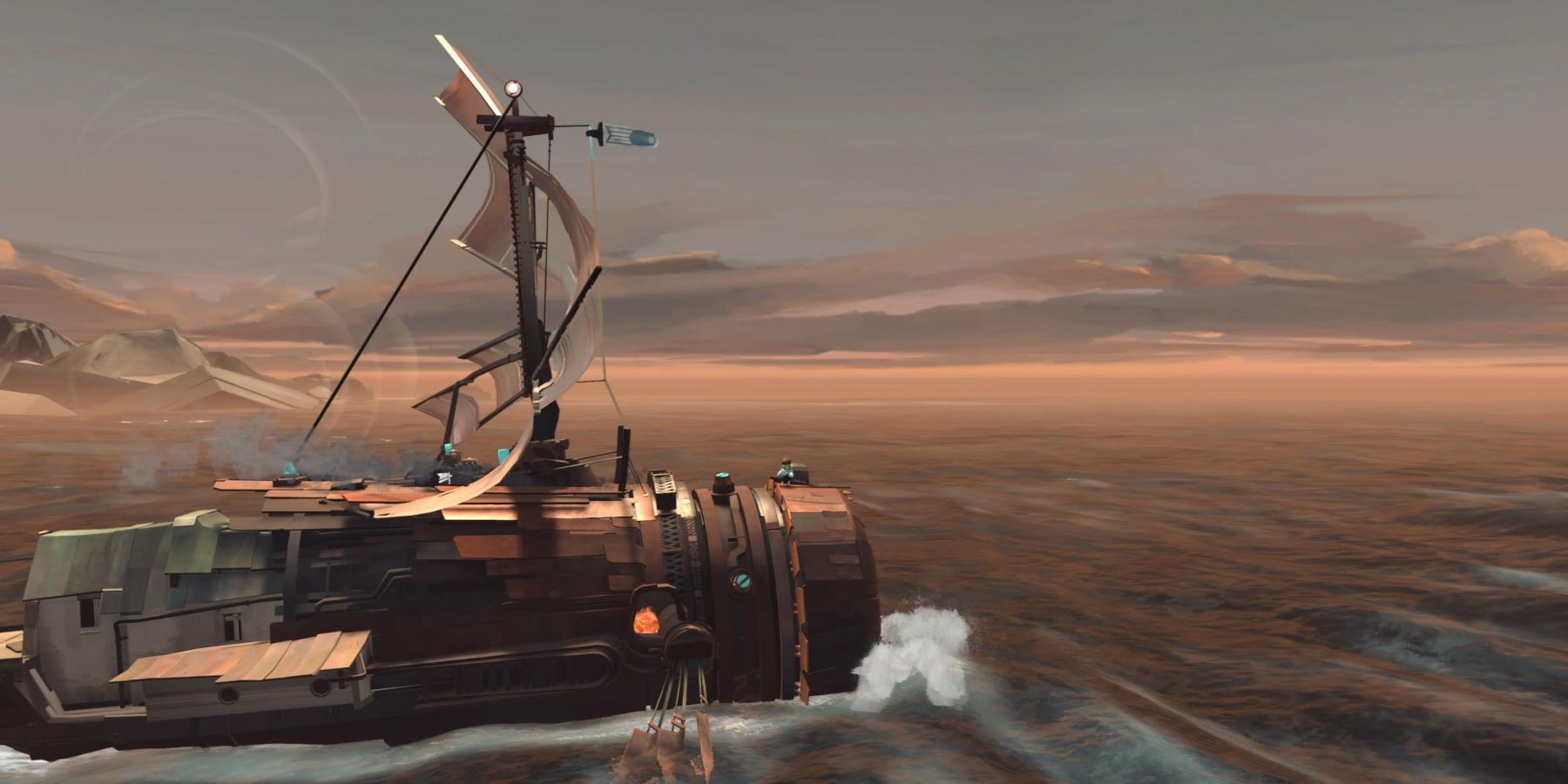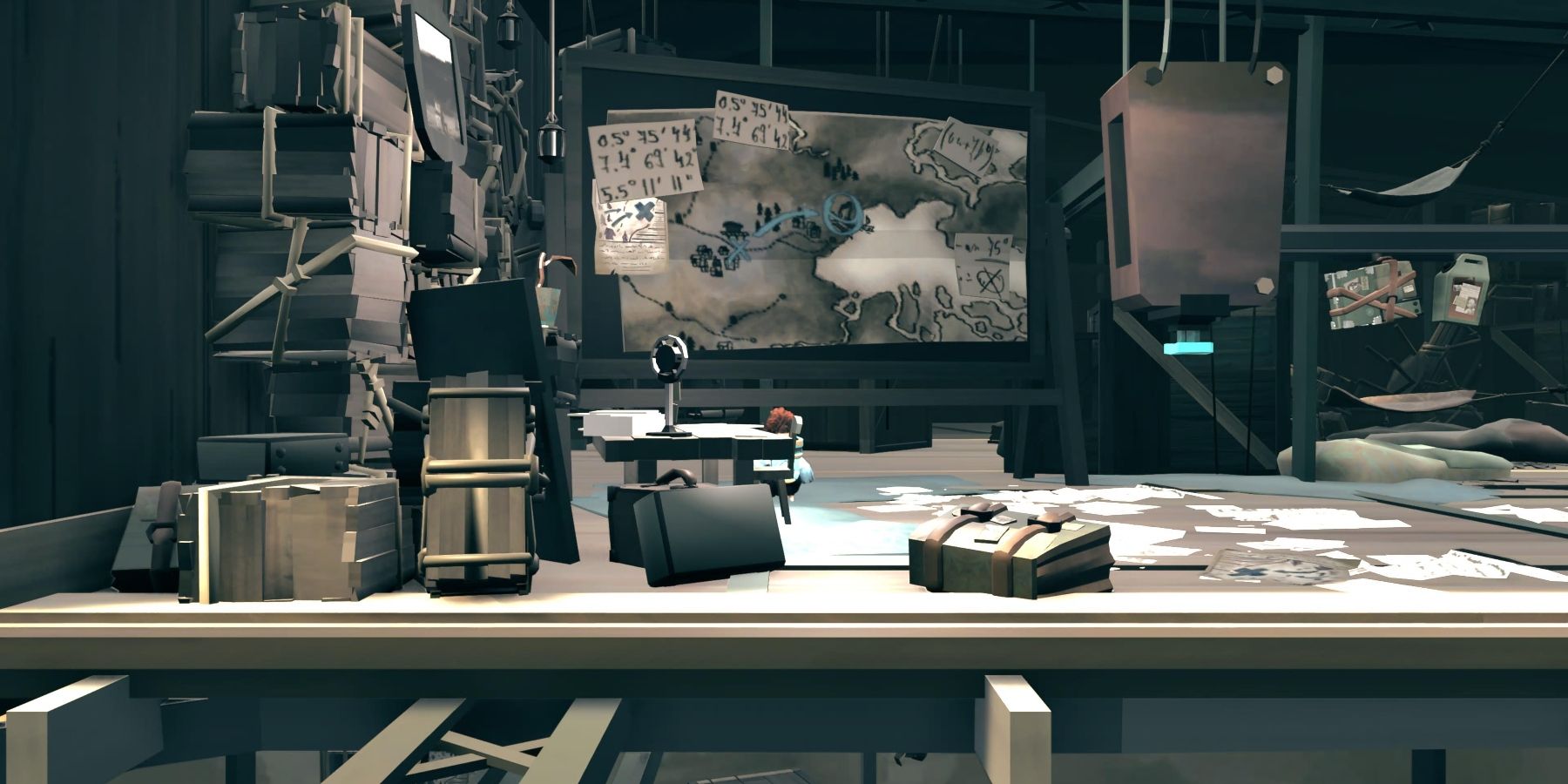Most video games today are packed to the brim with all sorts of content, game mechanics, and features to keep players engaged and entertained. However, some do away with all the frills and excess to bring a different kind of immersion, one that, despite its simple presentation, evokes beautiful moments and challenges, offering a unique gameplay experience. One such game is FAR: Changing Tides, the sequel to 2018's FAR: Lone Sails by indie developer Okomotive.
While Lone Sails took players aboard a unique ship capable of traversing vast wastelands, Changing Tides takes place on the ocean. In the game, players take control of Toe, who must make their way through a flooded post-apocalyptic world. Similar to its predecessor, players should expect a "meditative side-scrolling" adventure filled with challenging puzzles, a hand-painted environment, and a hauntingly beautiful soundtrack that would accompany players as they embark on this extraordinary journey. However, despite all the challenges that lay ahead, players have only one goal throughout: keep moving forward.
One of the most exciting characteristics of FAR: Changing Tides is that the game doesn't have a defined story. There are no dialogues, no in-game prompts showing where to go, and no notes that offer players some context about the world and what has transpired in it. Instead, everything is told through exploring the environment, poking at the player's curiosity and encouraging them to keep moving forward.
While the lack of an obvious storyline may not be everyone's cup of tea, this specific characteristic works well within FAR: Changing Tides, given that the story is shown, not told, allowing players to draw their conclusions and make their experience however they want it to be. In addition, the absence of in-game prompts and objectives also adds to the overall FAR: Changing Tides' overall immersion.
For example, there may be instances where players fail to stock necessary supplies and resources, only to find out that the journey ahead in the open sea will be long and demanding. As with FAR: Lone Sails, resources are king in Changing Tides. The unpredictable challenges players will face offer them the opportunity to create their own unique stories through their hardships in specific locations after failing to rack up valuable resources in previous areas.
At first glance, it is easy to describe FAR: Changing Tides as a slow-paced experience, especially with its developers dubbing it a "meditative side-scrolling" adventure. However, while the game does have its relaxing moments, where players find themselves at one with the sea, the game also offers exciting gameplay that could instantly leave players in a surge of panic. Running a tight ship in FAR: Changing Tides is no easy task, given that players will always find their way back to it and can even be considered as the game's main character. Players must first determine the primary source of power they will use at any given time, whether it be the ship's engine that requires fuel to use or the wind-powered sail.
Players will use most of their exploration time gathering resources to fuel the ship's engines, given that wind is not always available to propel the ship forward. These resources take in the form of oil, luggage, book stacks, children's toys, and other items that symbolize a long-lost civilization. Apart from the challenge of propelling the ship forward, players must navigate the vessel through locked gates, dead ends, and obstacles above and below water. Clearing these usually requires a bit of puzzle-solving, offering players a deserved break from sailing through the ocean.
Puzzles in FAR: Changing Tides offers a fair amount of challenge, given that the game does not provide any hints or context on how to solve them. The lack of hand-holding on the game's part allows players to organically find solutions to puzzles, requiring only a bit of common sense, curiosity, and scanning the area for interactive objects such as levers, switches, and ladders. Apart from offering a break from sailing, puzzles play another vital role in the game, as mechanical things players do while solving them may be the same mechanics required to run the ship. In a way, these specific puzzles serve as a tutorial on certain ship mechanics, allowing players to learn them in a safe environment before applying them on their journey.
The two things that tie the whole experience together are the visuals and the soundtrack. Each area in FAR: Changing Tides has been flawlessly hand-painted, evoking a sense of calm while players traverse the seas, fear during stormy nights, and hope as players sail away in the sunset into the unknown. Similarly, the soundtrack perfectly complements the visuals and gameplay, given that an appropriate track would play depending on the situation the player finds themselves in. Whether it be a heroic score after solving complex puzzles or the unsettling music during the calm before the storm, FAR: Changing Tides' soundtrack manages to be both haunting and relaxing.
One thing players must know beforehand is that the gameplay of FAR: Changing Tides could be repetitive. However, this cannot be considered a flaw, given that it is the nature of the game. In a way, the gameplay loop further emphasizes the dread of isolation, especially with the wide range of emotions players will feel throughout their journey. Of course, FAR: Changing Tides is not perfect, and players will find certain nitpicks in its controls. Zooming in and out requires players to hold specific buttons, which can be cumbersome when platforming or solving puzzles that require a closer look. Additionally, hooking and unhooking items can sometimes feel clumsy, especially when players find themselves in a hurry to retrieve certain items.
In the end, FAR: Changing Tides is a worthwhile experience that certainly lives up to its atmospheric adventure description. While the lack of in-game prompts poses a challenge to some, its absence encourages players to strike out and explore on their own and organically find solutions to puzzles. The puzzles are challenging, but solving them without any help from the game feels rewarding, encouraging players to keep moving forward. While some minor annoyances can be found in its controls, no glaring issues exist that cannot be fixed with a simple patch. Overall, FAR: Changing Tides perfectly executes its simple gameplay, offering players a truly memorable and immersive experience.
FAR: Changing Tides releasing on March 1, 2022, for the PC, PS4, PS5, Xbox One, Xbox Series X/S, and Nintendo Switch. Game Rant was provided a PS5 code for this review.




